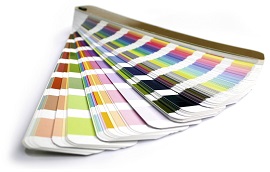One of the best things about owning your own home is that you have free reign over your decor and home design. That being said, recent studies have shown that your color choices when decorating can have a major impact on the energy efficiency in your home. The main consideration is how dark or light the decor is and variations in colors place a lesser role. Let’s take a closer look at this phenomena, and explore how light and dark rooms behave differently.
The Basics:
As a moody teenager, you may have wanted to paint your room black, and your mom wouldn’t let you. In fact, darker colors absorb 70 – 90% of the radiant energy that they are exposed to. This means that dark rooms will stay warm for longer if the drapes are opened and the sunshine is allowed in during the day. In contrast, lighter color reflects heat, keeping the room cooler for longer. Bearing this in mind, darker colors are a clear winner when it comes to maximizing the heating efficiency in your home.
The Dark Colors:
It may seem, that darker colors are a liability when trying to keep you home cooler in summer. If the room in question, has no exterior walls or few windows, the choice of color may not make much of a difference. Before you make a commitment, there are some things to consider first.
Rooms with darker walls will always feel smaller than those that are decorated in lighter colors. If you like light and airy spaces, a darker shade in your room may make you feel miserable. A prospective buyer for your home will also expect to see lighter colors that make the space lighter and more inviting. If you’re planning to sell your home, it will have to be redecorated to fit the expectations of people viewing your home.
If you’re happy to go darker, it’s possible to keep the room cooler by using the correct window treatments. During the day, heavier drapes or curtains with full window coverage can help to reflect sunlight and minimize the heat absorption.
The Light Colors:
It may seem, that choosing lighter colors is going to adversely affect the energy efficiency of your home. This is true, but don’t despair, it is possible to make striking decor statements and increase energy efficiency. Using dark colors as an accent in rooms that are lighter can make a big impression. Painting elements in a room, such as window and door frames, radiators, light fixtures and feature walls in darker contrasting colors also work well. These darker features can help to improve heat absorption and energy efficiency.
Most modern household paints have a light reflectance value (LRV) printed on the can. The higher the LRV, the more light that is reflected and this makes it easy to choose paint colors that will help you to make the most of natural light. This also helps with energy efficiency, as your room lights can be kept off until sunset occurs at the end of the day.
